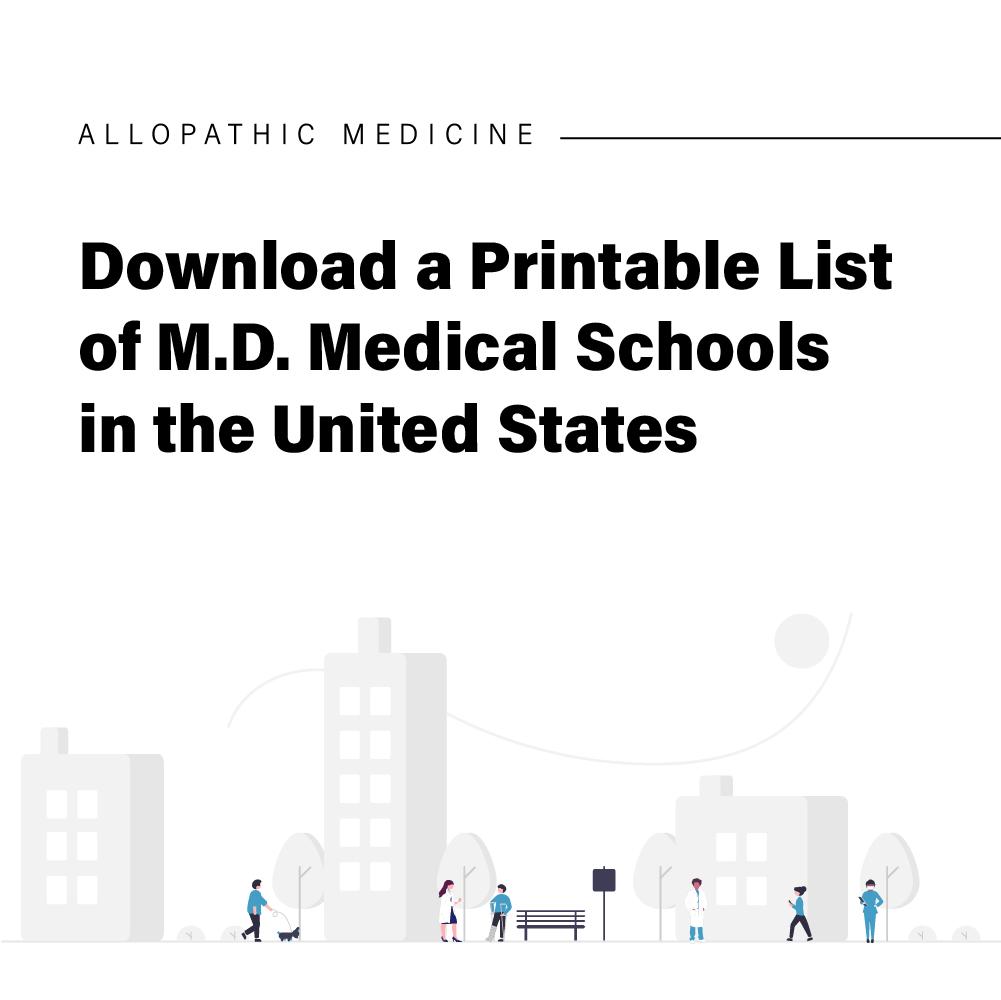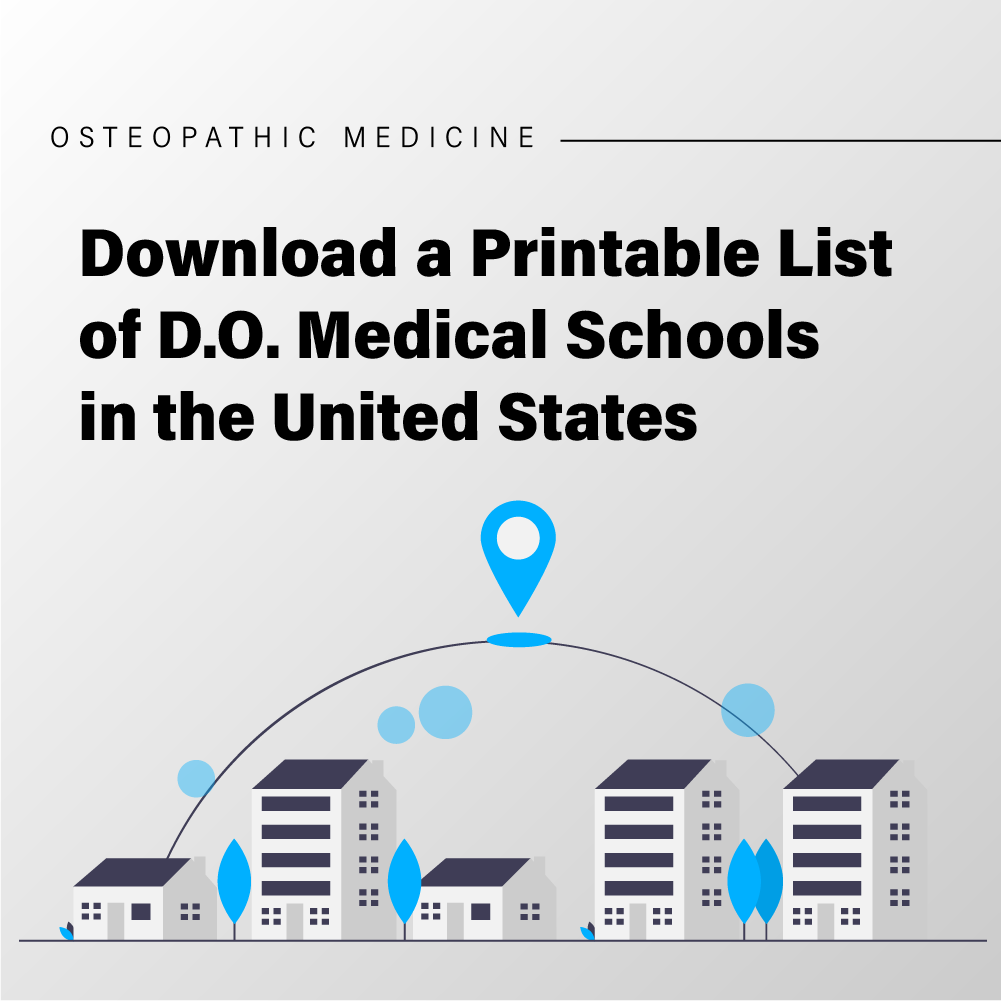MSAR is an official database that provides medical school admissions requirements for M.D. medical schools in the U.S and Canada.
If you’re planning on applying to medical school, you’ve likely come across a ton of different acronyms, including MSAR, AAMC, TMDSAS, AACOMAS… The list goes on. Each of these acronyms deserves their own posts. However, in this post, we will discuss everything you need to know about MSAR.
MSAR, which stands for Medical School Admissions Requirements, is a database of information on all accredited M.D. programs in the United States and Canada. It includes data on program requirements, curriculum, admissions statistics, and more. This is a tool that helps students navigate medical school applications by collectively aggregating important information on all M.D. (allopathic) medical schools.
The American Association of Medical Colleges (AAMC) created MSAR. This is the same organization who administers the MCAT and AMCAS. The AAMC equivalent for osteopathic medicine is the American Association of Colleges of Osteopathic Medicine (AACOM). Their AMCAS equivalent is AACOMAS, which is an application service students can use to apply for D.O. (osteopathic) medical schools. Like AAMC, AACOM uses the MCAT to qualify students for their medical school applications. Some osteopathic medical schools, however, do not require the MCAT. The MSAR equivalent for D.O. medical schools is mentioned below. For more information on allopathic vs. osteopathic medical school degrees, check out our article: M.D. vs. D.O. School – Medical Degree Comparisons.
We got a little sidetracked. Now let’s get back to our original topic — everything you need to know about MSAR.
Who is MSAR for?
MSAR is an important resource for students who are interested in attending medical school, as it can help them understand what each program is looking for and what they need to do to be competitive candidates. Students can use MSAR to research schools, compare requirements, and plan their application strategies.
MSAR is also a valuable resource for advisers and counselors who work with medical school applicants. For instance, if you are a high school advisor and you want to help students find medical schools that offer BS/MD degrees to high school students, then MSAR is your go-to resource. On the other hand, if you are a college advisor helping students pick their classes, you can refer to MSAR for program requirements to ensure your advisees are receiving the most up-to-date information.
MSAR Data
There are many different ways to use the MSAR database. You can use it to research medical schools, create a list of schools to apply to, and track your progress throughout the application process.
One of the most useful features of MSAR is the ability to filter medical schools by various criteria. This can be helpful if you want to create a list of schools that you are likely to be a competitive candidate for. For instance, if you a great GPA and a subpar MCAT score, you can filter medical schools by your respective scores. This can help you save time in your medical school application process by not considering schools who only admit MCAT scorers in the top 10 percentile. Through MSAR’s database, you can filter schools by location, out-of-state/international acceptance, MCAT median scores, GPA medians and application deadlines.
MSAR also allows you to sort medical schools alphabetically or by MCAT median (low to high, or high to low). This can be helpful if you want to see where all the medical schools in the United States and Canada rank for MCAT score acceptance.
Now that we covered the database’s interface and the search and filter function, let’s dive deep into the medical school profiles on MSAR.
Overview
The overview section provides a snapshot of the school’s admission statistics and some quick facts. In the overview section, you can expect to find:
- Application deadline
- Out-of-state or international student acceptance
- Combined degrees options (BS/MD, MD/MPH, MD/MBA, MD/JD, MD/PhD)
- Whether the school is public or private
- In-state/out-of-state tuition fees
- Men to women ratio of accepted students
- Median MCAT and GPA for acceptance
This section is a great resource to gain a quick understanding of what the school has to offer. Also, this section contains general information and a mission statement for the respective medical school. These two subsections can help you gain an understanding of the school’s ethics and can be used to craft your secondary application essays. For example, if you’re applying to a school whose mission statement focuses on research, then you might want to consider writing about your research experiences in-depth in your secondary application. On the other hand, if a school’s mission statement focuses on public health and service, then you might want to write about your volunteer experiences in your secondary application.
Keep in mind, all the medical schools within the AMCAS or AACOMAS will receive the same primary application from you. However, secondary applications are school specific. Therefore, you can write about different topics for different schools in the secondary application. This gives you an opportunity to really speak to the school’s individual mission.
Important tip:
A lot of applicants make the mistake of submitting general secondary statements that aren’t school specific. For application readers, this is pretty obvious. Personalizing your secondary application essay response will increase your chances of appealing to the reader and ultimately earning an interview.
Admissions
In this section, you can find what application service the medical school uses. Since MSAR only aggregates data of M.D. medical schools, the application service will be either AMCAS or TMDSAS. For further information on the different medical school application services, visit our article: The 3 Main Medical School Applications Every Premed Must Know.
You can also find information on the school’s letter of recommendation (LOR) requirements, including the minimum and maximum number of letters the school accepts. Moreover, in this section, the school will note if they accept or prefer committee letters, letter packets, or individual letters. For more information on letters of recommendations, visit our article: Med School Letters of Recommendation (LORs) | The Ultimate Guide 2023.
Furthermore, you can find information on:
- The medical school’s secondary application fees
- Whether the medical school offers an Early Decision Program (EDP)
- Required and recommended course work
- Application screening information
- and more!
For more information on medical school prerequisites or secondary application fees, check out our articles:
Medical School Prerequisites in 2023: The Ultimate Guide
Secondaries Fees List | Medical School Applications 2023
Acceptance Data
This section is debatably the most important section of MSAR’s medical school profiles. In this section, you can find MCAT and GPA medians for matriculants to the medical school. This data is certainly important to help you gauge whether your application is competitive.
You can also find demographic information for the medical school’s students, including their race and ethnicity, gender, age range, home state, disadvantage status, and more.
Education and Research
The next section is education and research. Here, you can gain a better understanding of what attending the school would be like. For instance, you can find whether the school grades their students as pass/fail or using the traditional grading system: A,B,C,D,F. In addition, you can learn about the university’s research funding sources and clinical/patient experience opportunities.
Tuition, Aid & Debt
In this section, you can find the cost of attendance for a specific medical school. Also, you can compare in-state and out-of-state tuition fees.
Campus life
Finally, the campus life section helps you gain an understanding of the physical location of the university and the accommodations they offer. For instance, you can discover whether the school is in an urban or rural location, what support systems the school offers, and whether on-campus housing is available.
In summary, each section of the MSAR medical school profile offers unique information to the respective university. Some information is free while other sections require a subscription. Next, we’ll cover the cost of MSAR.
How much does MSAR cost?
MSAR offers a free subscription. However, you don’t get access to all of its features. To get full access to MSAR, you’ll need to purchase a subscription. A 1-year subscription to MSAR costs $28.00 without tax. On the other hand, a 2-year subscription to MSAR costs $36.00 without tax. Before making the purchase, note that MSAR is a non-refundable/non-returnable service. In other words, your purchase is final. If you qualify for the fee assistance program, however, you can gain access to all of MSAR’s features for free.
Here is an example of what the free MSAR database looks like:

Notice that MSAR will block off certain sections of information and label it “subscribers only”.
How to register for MSAR
In order to register for MSAR, head over to their website.
Click “Sign in to MSAR”. You can use the interface for free. However, if you want to pay for all of MSAR’s features, then you need to set up an AAMC account.
Does MSAR show admissions requirements for D.O. schools?
In short, no. MSAR does not show admissions requirements for D.O. schools. Since MSAR was designed, developed, and is currently maintained by AAMC, this database only contains information about allopathic (M.D.) medical schools. However, there is good news. Read on to find the MSAR equivalent for D.O. medical schools.
What is the MSAR equivalent for D.O. schools?
The American Association of Colleges of Osteopathic Medicine (AACOM) has a resource called the Choose DO Explorer. Similar to MSAR, the Choose DO Explorer allows users to filter through D.O. medical schools by location, school type (public/private), for profit or not for profit, international student acceptance, school setting, dual degrees, average GPA or average MCAT. Unlike MSAR, the Choose DO Explorer allows you to search for medical schools that changed their admissions requirements based on Covid-19. The best part about the Choose DO Explorer is that it’s 100% free to use! In order to get a better understanding of the Choose DO Explorer interface, check out the image below.

Does MSAR show admissions requirements for Texas medical schools?
Yes, MSAR shows which allopathic (M.D.) medical schools use the TMDSAS application service in the “Admissions” section of the medical school’s profile.
Is MSAR worth it?
Selecting which medical schools you apply to will be one of the most significant decisions you ever make. After all, the medical school you choose can be a major deciding factor on what opportunities are allotted to you in medical school. Therefore, using resources to help you make smart and informed decisions is always a good idea.
In conclusion, the MSAR database is a valuable resource for anyone considering applying to medical school. Be sure to take advantage of all the features it has to offer, even if you can only afford the free subscription!
Disclaimer
MSAR is a registered trademark of the AAMC. Premed Plug is certainly not affiliated with AAMC or any universities, colleges, or official test administrators. This article was developed based on the most recent publicly available data provided by MSAR, Choose DO, and other resources. However, you are responsible to check stats on official websites for the most up-to-date information. In other words, you are responsible for your own results.
Further Reading
Medical School Secondary Applications: The Ultimate Guide 2023
MD-JD Dual Degree Programs List and Information 2023
MD-MBA Programs List and How to Get in 2023
MD-PhD Dual Degree Programs List and Information in 2023



